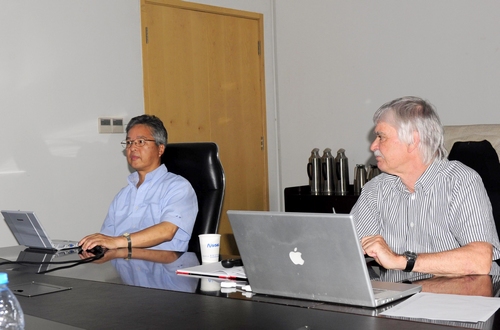Max-Planck Scientist Visited NSSC for MIT Mission Cooperation
Dr. Berndt Klecker from Max-Planck Institute and Prof. Shigeto Watanabe from Hokkaido University visited National Space Science Center (NSSC), Chinese Academy of Sciences (CAS), in the middle of June, for the ongoing cooperation on the Magnetosphere-Ionosphere-Thermosphere (MIT) Mission.
During this visit, they discussed with the MIT team about the key scientific and technical issues such as MIT coupling, upflow ions from the polar ionosphere, electric potential on satellite surface as well as the temporal resolution and dynamic range of instruments used to detect particles.
As major international cooperation partners of the MIT Mission, Dr. Klecker shared the successful experience of European Space Agency (ESA) in developing and managing spaceborne instruments, while Prof. Watanabe introduced the Japanese Akebono mission aiming to study the aurora and Earth's magnetosphere environment. The Akebono satellite has been operating since its successful launch on Feb. 22, 1989.
The MIT mission, listed as one of the CAS’s Strategic Programs on Space Science, is now under a comprehensive scientific and engineering background study in China. The scientific objectives of the MIT Mission include the origin and acceleration of upflow ions, the impact of upflow ions on magnetic storm evolution, as well as the fundamental mechanisms governing MIT coupling.



